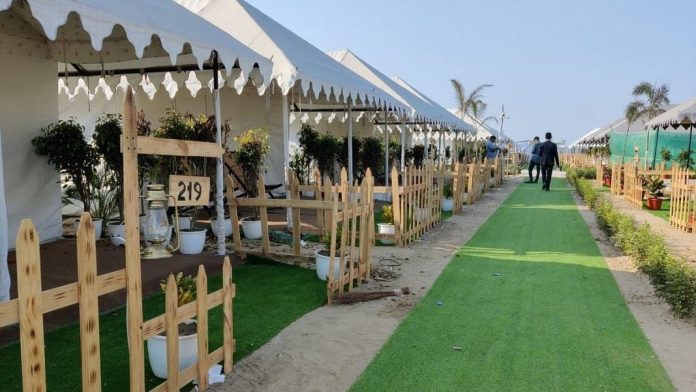Prayagraj: The Maha Kumbh Mela, traditionally a congregation of millions of devotees seeking spiritual enlightenment, has taken a luxurious turn in 2025. With exclusive VIP arrangements, five-star hospitality, and helicopter rides, the event now caters to the affluent, offering a stark contrast to the usual chaos of the mass pilgrimage, reported the Clarion India.
A glimpse into the Elite Kumbh reveals a world far removed from the crowded ghats and makeshift tents of ordinary pilgrims. For the privileged, the confluence of the Ganga, Yamuna, and the mythical Saraswati is now accessible through private boat rides, with dips in secluded ‘VIP Sangams’ costing between ₹5,000 and ₹10,000. Luxury tent cities, boasting Swiss-style chalets, ensuite bathrooms, all-you-can-eat buffets, and even spa treatments, have been set up to cater to the elite.
“We had seen reels of the crowded Kumbh but never imagined it would be like this,” said Pankaj Bakshi, an NRI from Dubai, staying at an ITDC luxury tent priced at ₹50,000 per night.
The Uttar Pradesh administration has turned religious tourism into an economic powerhouse, with the hospitality sector projected to generate ₹2,500 crore in revenue. Companies like Zenith Hospitality and private entrepreneurs have seized the opportunity, setting up luxury cottages, ‘Dome City,’ and curated spiritual experiences for high-net-worth individuals.
Manoj Mishra, head of Zenith Hospitality, stated, “The perception of Kumbh as chaotic and meant only for the middle class is changing. We are providing a spiritual experience with modern luxury.”
Dome City, with bulletproof and fireproof polycarbonate structures, offers a high-tech stay at ₹1 lakh per night. Exclusive restaurants, sattvik buffets, and even pizza chains like Domino’s cater to the elite crowd, ensuring that their spiritual retreat remains as comfortable as possible.
While luxury thrives, the stark contrast with the general pilgrimage experience is unmissable. Crores of devotees continue to brave the crowded ghats, long queues, and inadequate sanitation facilities. The recent 29 January stampede, which claimed at least 30 lives, exposed the persistent dangers of overcrowding, yet the elite Kumbh remains untouched by such tragedies.
Mukesh Singh, a devotee, observed, “It doesn’t feel like Kumbh anymore. The roads are empty in the VIP zones, while the rest of us struggle through the masses. Even religion now has a divide between the rich and the poor.”
As the Maha Kumbh continues until 26 February, this dual experience—one of devotion and endurance, the other of comfort and exclusivity—raises questions about the evolving nature of religious festivals in India. Is this transformation a necessary modernization, or is it widening the gap between spirituality and commercialization?




